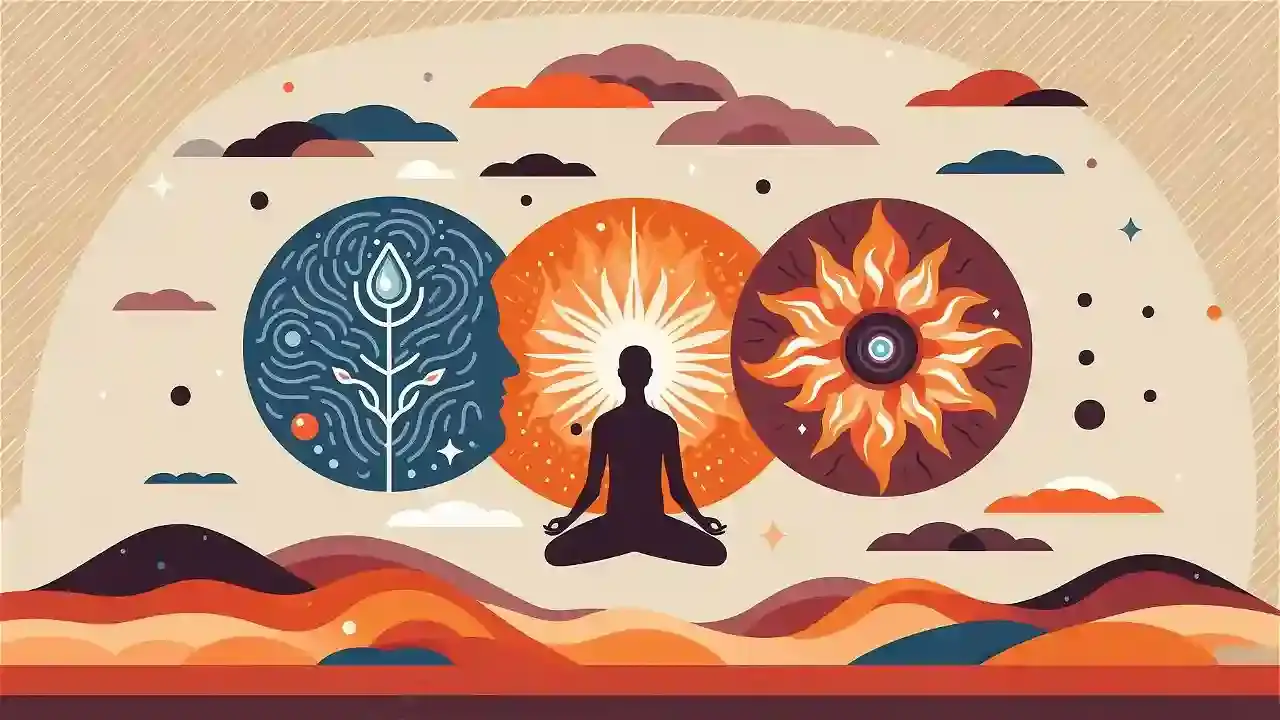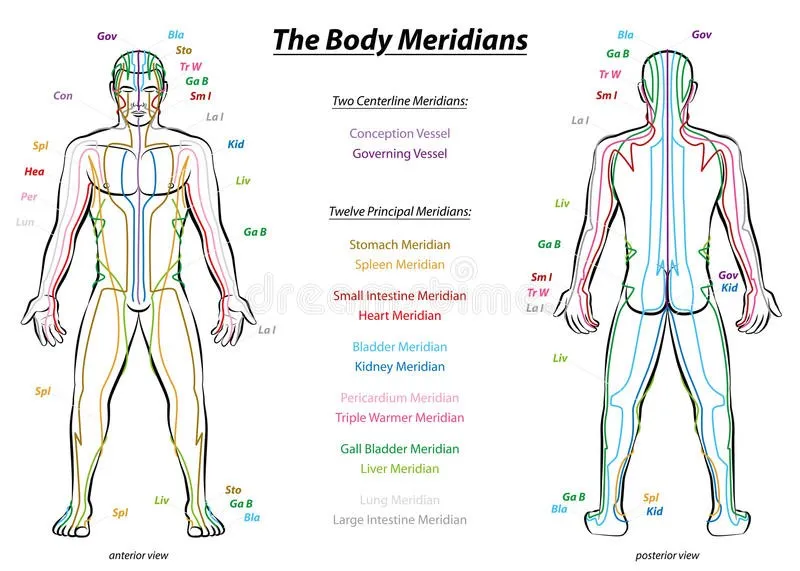
This post highlights the need to perform a complementary analysis of the mental causes of the onset of chronic diseases, using tools of Indian and Chinese traditional medicine. Surprisingly, they are irreplaceable in modern medicine. Without the treatment of the psycho-energetic dimension, most treatments are doomed to failure because they do not treat the causes of the disease but only the symptoms of the disease.
Traditional Indian and Chinese medicine provide an energetic worldview essential for understanding chronic illness, but cannot substitute modern medicine. Thus, the Integration of modern medicine with self-healing medicine is essential. The SWOT analysis shows a mirror image of Modern and Self-Healing Medicines' weaknesses and strengths. Thus, Integration is requested. Link: Conventional vs. Self-healing medicine—SWOT analysis.
Modern medicine is mainly mechanistic medicine and therefore does not succeed in treating chronic diseases properly.
Instead of treating the causes of the disease, which almost always have psychological roots, it treats only the symptoms. It is precisely Indian and traditional Chinese medicine that presents a deep philosophy of energetic balance and presents the connections between unresolved mental trauma and the onset of chronic diseases. Surprisingly enough, this is a very deep understanding of the body-mind-spirit relationship, which modern medicine accepts but does not adopt as part of the integrated medical treatment. Traditional Indian and Chinese medicine is seen by many doctors as outdated, without a proven and solid scientific basis. But in doing so, they perpetuate chronic diseases.
- As someone who has experienced many hundreds of difficult and painful treatments in China, due to cirrhosis of the liver, I can emphasize with certainty that the philosophy and the treatments I received and the analysis I performed on myself, using the methodology of blocked chakras, seem very relevant to me even today. They are irreplaceable, especially for patients with severe illnesses. For those who look closely, the level of sophistication is surprising even today. It is not an outdated medicine, but rather the opposite.
- In Indian medicine, there are 7 energy centers (Chakras) along the body's spine. In Chinese medicine, there are 14 meridians, energy flow channels (12 meridians + 2 central). However, it is not possible to create a parallel between the systems.
I associate the chakras with traffic lights, while the meridians with main roads. Acupuncture points are two-way energy valves and can be described by analogy as crossroads.
Cysts, polyps, and tumors are formed in an organ in a prolonged inflammatory state or along the meridian (energy channel) to which it is associated.. Link: Various tumor types isolate damaged tissue in self-defense.
The ability to link chronic morbidity to the mental causes of the disease is dramatic, no less!
Several common examples illustrate an energetic diagnosis using traditional Indian and Chinese medicine.
If you examine the functionality of the affected organ, you will find that it is often associated with certain emotions, and you can analyze yourself even without prior knowledge.
- Emotional bitterness affects the gallbladder. (The bile fluid is bitter.)
- The kidneys, which balance fluids and blood pressure, are rife with economic and existential crises.
- The heart is connected to the fourth energy center, which is influenced by love and self-acceptance.
- The lungs and the heart are connected, also in the energetic dimension. Fear of abandonment takes the air out of your lungs.
- Rather surprisingly, the knees are related to digestion, not only in the physical dimension. The two meridians of the stomach and spleen pass by the knees. They usually reflect issues that we have difficulty digesting on the emotional level.
- The liver is associated with disappointments. The liver is the organ of bitterness.
- Diseases such as Alzheimer's and Parkinson's are related to the sixth energy center of the third eye and self-fulfillment.
- Dental problems are not only a question of oral hygiene but also a reflection of problems with communication, the fifth energy center, the throat chakra.
- Prostate gland problems in men. In women, the uterus and ovaries are associated with the second energy center, influenced by sexuality and creativity.
You don't have to be a Buddhist monk or an expert in traditional Chinese medicine to understand the close connection between body and mind.
The seven human Chakras (Energy Centers) and organs represent respective influential emotions.

Similarities between Ayurveda and Traditional Chinese Medicine (TCM): quotes from DeepSeek AI.
- Holistic Approach: Both systems view health as a balance of physical, mental, and spiritual elements.
- Energy Concepts:
- Ayurveda: Focuses on Prana (life force) and Chakras (energy centers likened to "traffic lights" regulating flow).
- TCM: Centers on Qi (vital energy) flowing through Meridians (pathways likened to "roads").
- Balance and Harmony: Health depends on balancing energies (Ayurveda: Doshas; TCM: Yin-Yang).
- Herbal Medicine: Both use plant-based remedies tailored to individual needs.
- Mind-Body Connection: Emotions are linked to physical health (e.g., Ayurvedic emotional blockages, TCM's organ-emotion correlations).
Link: Yin Yang House Theory - Explore Acupuncture and Herbal Medicine. (Interactive meridian maps)

Differences Between Ayurveda and TCM:
- Energy Systems:
- Ayurveda: Chakras (7 key centers) act as focal points for energy regulation.
- TCM: Meridians (12 primary channels) form a network for Qi flow; acupuncture points (intersections) address blockages.
- Diagnostic Methods:
- Ayurveda: Pulse, tongue, and Dosha analysis.
- TCM: Tongue, pulse, and meridian assessment.
- Treatment Tools:
- Ayurveda: Diet, yoga, meditation, and Panchakarma (detoxification).
- TCM: Acupuncture, moxibustion, and tai chi.
- Disease Origins:
- Ayurveda: Imbalance in Doshas (often tied to lifestyle/diet).
- TCM: Qi stagnation or imbalance (e.g., blocked meridians).
Integration Potential: quotes from DeepSeek AI.
Link: Integrative medicine is crucial for chronic patients.
- Energy Mapping: Combine chakras (traffic lights) with meridians (roads) for a layered understanding of energy flow.
- Targeted Therapies: Use acupuncture at chakra-linked points or Ayurvedic herbs to support meridian health.
- Mind-Body Synergy: Merge Ayurvedic practices (e.g., meditation for chakra balance) with TCM techniques (e.g., acupuncture for Qi flow).
- Modern Medicine Insights:
- Ayurveda's link between emotional events and energy blockages (e.g., stress affecting chakras) could enhance psychosomatic approaches in healthcare.
- TCM's focus on "intersection" points (acupuncture sites) offers precision in addressing physical symptoms of emotional distress.
- Research Opportunities: Study combined herbal formulas or hybrid therapies (e.g., yoga + tai chi) for chronic conditions.
Conclusion: Integration could create a "whole-body GPS" for health, blending Ayurveda's emotional-energy insights with TCM's structural meridian framework. Modern medicine may benefit by adopting their diagnostic synergy and holistic prevention strategies, though evidence-based validation is crucial.

